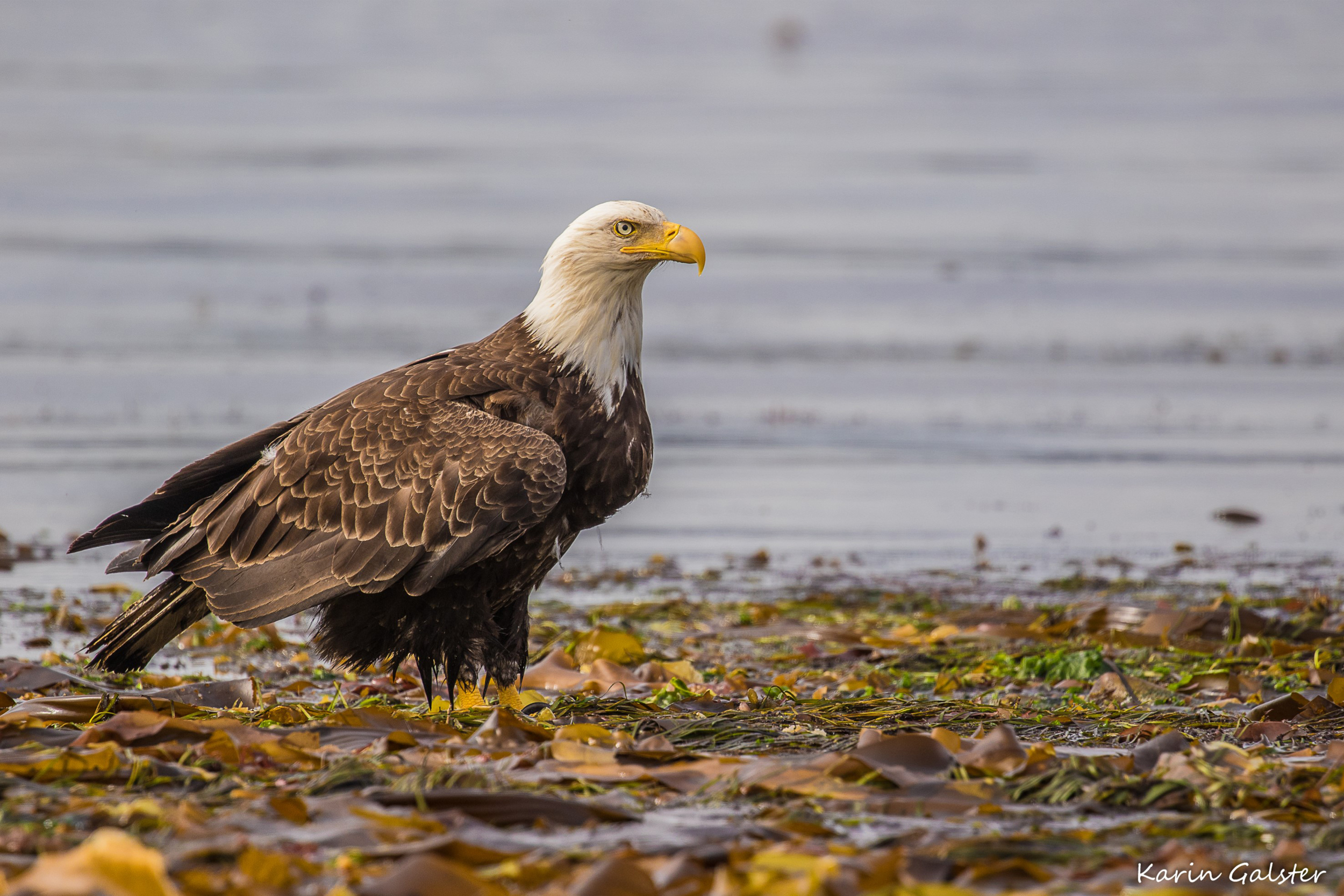Ever since I saw my very first sea eagle, a white-tailed eagle (Haliaeetus albicilla) in Norway a few years ago, I have been in love with these big, majestic, elegant and extraordinary raptors. The bald eagle (Haliaeetus leucocephalus) is a close cousin of the white-tailed eagle, that can be found in similar habitats across the North American continent, in particular in Canada and Alaska. With a wingspan in excess of 2 m, bald eagles are amongst the biggest raptors in North America. They favour large bodies of open water, both coastal saltwater areas and inland freshwater spots.
The species is protected today, but like many other raptors it suffered relentless persecution for decades. Hunters pretexted all sorts of fallacious stories about alleged acts of predation that seem almost farcical today, such as bald eagles grabbing lambs or even young children in their talons! Shooting, trapping and poisoning of this impressive raptor continued until it was very nearly wiped out. Widespread use of DDT as well as habitat destruction further sped up the decline of its already severly reduced population. Given how close the bald eagle came to extinction, it seems almost a miracle that we are once again able to admire this beautiful bird today.
Unsurprisingly fish comprise the bulk of its diet throughout its range, but the bald eagle is also very opportunistic predetaor and, depending on availability and need, will also eat birds, reptiles, amphibians, invertebrates and small to medium sized mammals such as rabbits, ground squirrels or raccons. They are happy to scavenge carrion or left-overs from other predators’ kills and have even been known to harass smaller raptors in order to steal their catch.
Adult birds have distinctive white heads and tails contrasting against a darker, chocolate brown body and wings. Young birds tend to have dark heads and tails and their body and wings are of a more or less mottled brown . They will attain their caracteristic adult plumage after about 5 years.
Bald eagles like to nest in forested areas near water, typically they choose tall conifers to build their enormous nest. Nests are often reused year after year and are amongst the biggest birds nests in the world.





























































